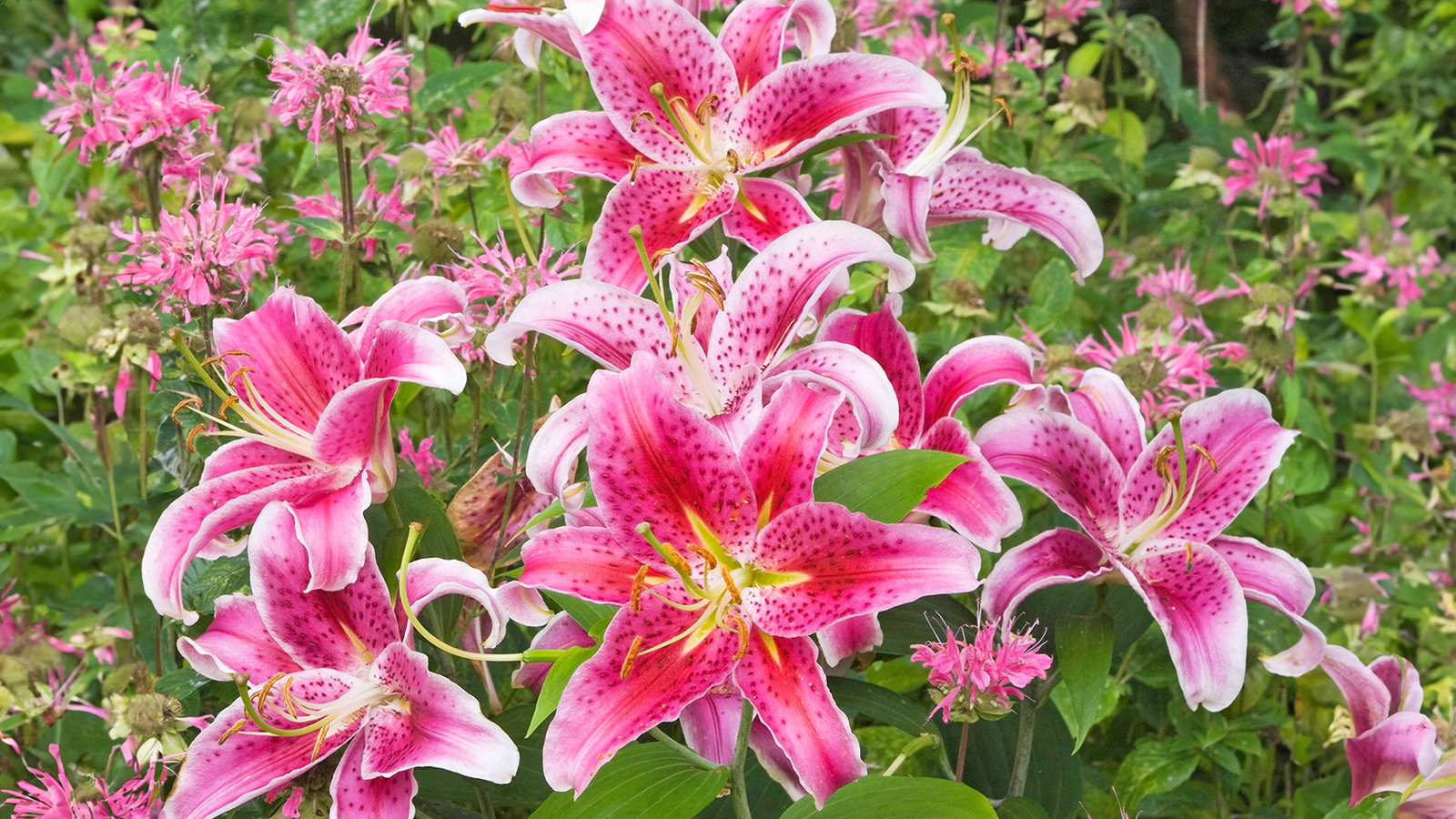How and When to Transplant Lilies: A Complete Guide for Success
Lilies tend to naturalize in the garden, and unlike some other bulb plants, they don't go dormant. Learn how to transplant and divide them.

Lilies are a stunning, often fragrant, centerpiece in any garden, but many gardeners are eventually faced with the same question: when is the best time to transplant lilies?
Over time, lily bulbs multiply, and the clumps can become overcrowded. When this happens, you'll often notice the plants producing fewer or smaller flowers due to the competition. To keep your plants vigorous and ensure a spectacular show of blooms, we suggest you aim to divide and move your lilies every three to five years.
However, the timing for this task can be tricky. Unlike tulips or daffodils, lily bulbs don't go completely dormant in winter, which makes the process slightly different. While moving an established clump shares some steps with planting lilies for the first time, getting the timing and method right is crucial for the bulbs' health.
When to Transplant Lilies
The best time to transplant most lilies, including popular types like Asiatic lilies and Oriental lilies, is in the fall when they start to go partially dormant. Wait until the foliage has yellowed and died down. This gives the plants plenty of time to store energy in the bulbs, which will lead to bigger, better flowers next year. Do not wait until the first frost.
Divide and transplant lilies every three to five years. Whether you grow Tiger lilies, Trumpet lilies, or other varieties, look for signs that your lilies could benefit from dividing: spindly new growth, narrower flower buds, and shorter stems than usual. Check for these signs in spring, and if you see them, plan to divide in the fall.
How to Transplant a Lily
Because lily bulbs do not go through a complete dormant phase, they should be replanted right away after division. Plan to dig up (with something like this Fiskars Ergo Garden Trowel from Amazon) , divide, and transplant lilies all in one day. Have the new locations for the divided bulbs ready to go for planting so there is no delay.
When you’re ready to divide and move lilies, start by cutting the foliage back a little to make them easier to work with. Dig down at least 12 inches (30 cm) deep and several inches around each lily plant to ensure you don’t damage any bulbs with your shovel or spade. Once you have the bulbs out of the soil, you can cut the leaves down right to the top of the bulb.
Sign up for the Gardening Know How newsletter today and receive a free copy of our e-book "How to Grow Delicious Tomatoes".
Gently pull up the bulbs and divide them. When dividing lilies, you’ll see older, larger bulbs and newer, smaller bulblets. Gently separate the bulbs and bulblets for replanting. Plant the larger bulbs to a depth of about five to six inches (13 to 15 cm). Plant the smaller bulblets to a depth of just two to three inches (5 to 7 cm).
Place bulbs in clumps of three or four and space the clumps 8 to 12 inches apart (20 to 30 cm). Add a layer of mulch over the newly planted bulbs to insulate them for winter. You can pull back some of this mulch in spring as the bulbs begin to push through new growth.
Frequently Asked Questions
Can I Transplant Lilies in Summer?
While many gardeners agree that fall is the best time to divide and transplant lily bulbs, it is possible to move them in summer. One advantage of this is that you can see the flowers and have a better idea of where to move each lily, especially if you have different types and colors. They are also at maximum size at this time of year, so it’s easier to judge where to dig down to avoid damaging the bulbs.
The only time of year when you should definitely not dig up and move lilies is spring. It’s too easy to damage the new growth, which can destroy any hope it will bloom that year.
Do Lily Bulbs Multiply?
Yes, lily bulbs multiply underground as they naturalize. As a result, groups of lilies can become overcrowded and need to be divided for optimal health and growth. Look for small bulblets growing from older plants as you lift and divide them. This is new growth that will lead to new flowers after a year or two.

Bonnie Grant is a professional landscaper with a Certification in Urban Gardening. She has been gardening and writing for 15 years. A former professional chef, she has a passion for edible landscaping.

